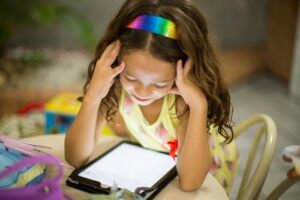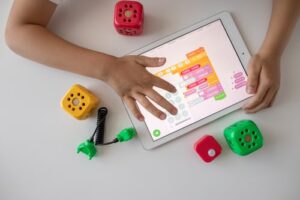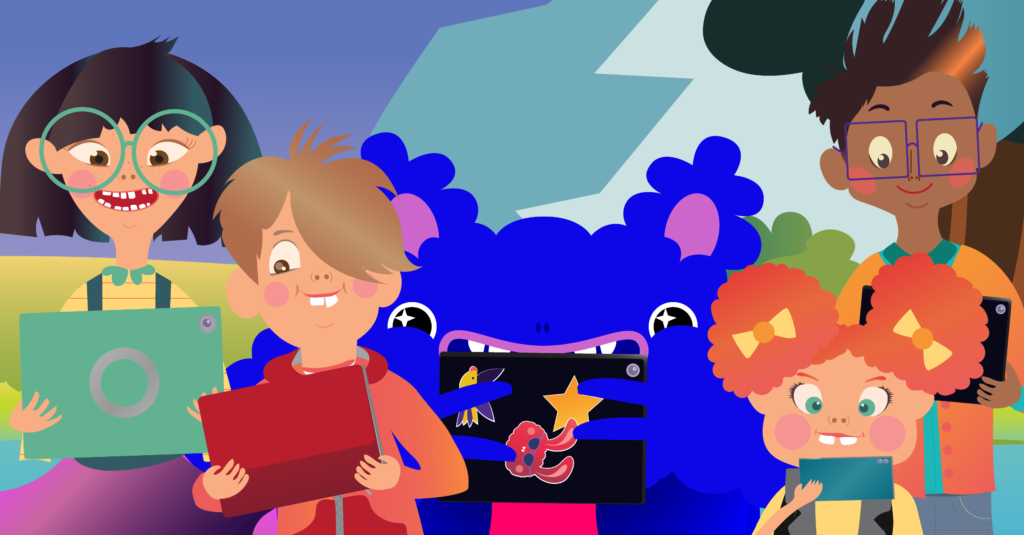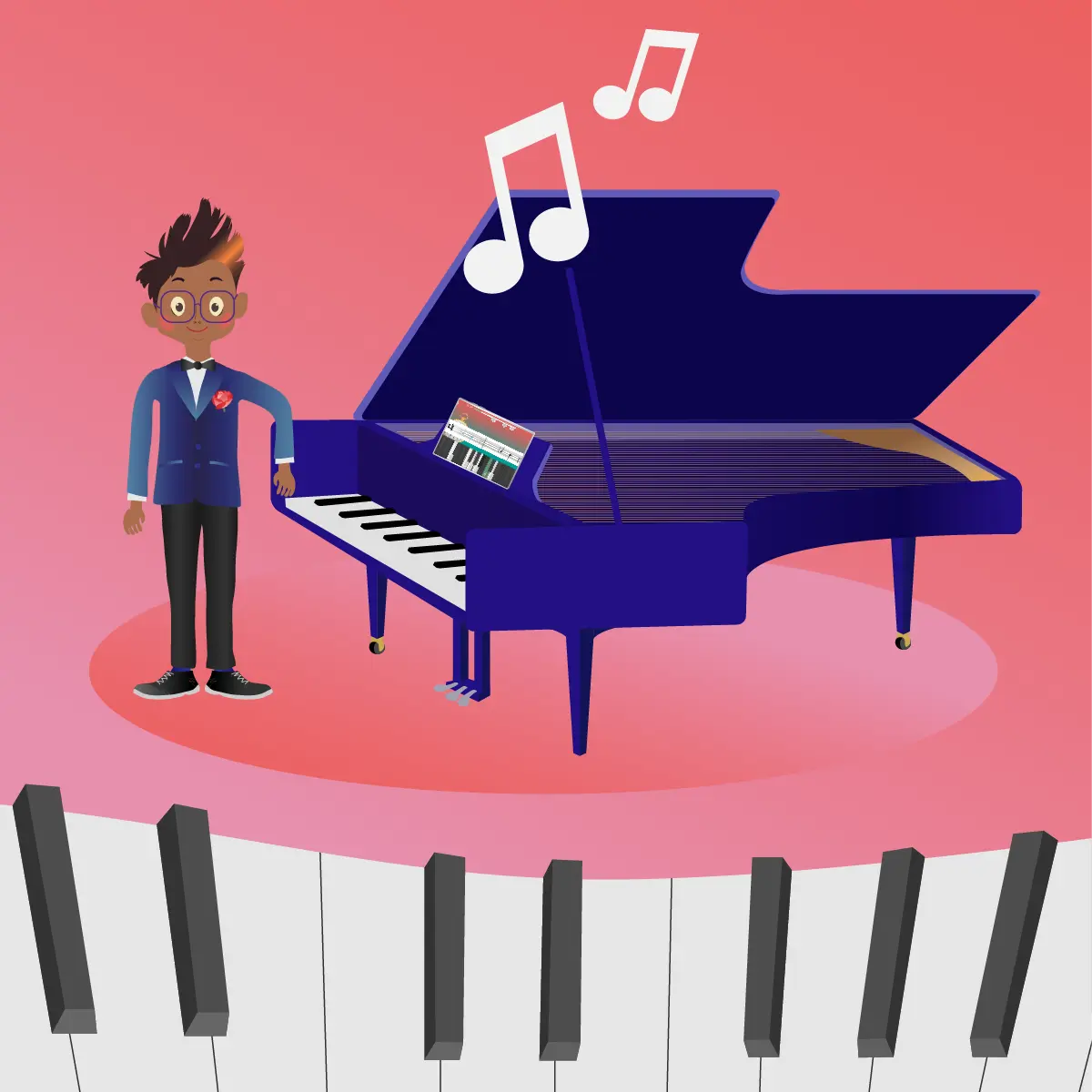By Jonathan Duffy, Arctic Meta
Many people agree that the way individual students’ needs can be met in the modern world has greatly improved the overall learning experience for students, parents and educators. The ‘one size fits all’ approach that was followed for over a century seems to be making way for a more understanding system that sees students as different individuals with different strengths and weaknesses and, therefore, different needs.
A large player in the ability to enhance the learning experience in the past decade has been educational technology, or ‘EdTech’ for short. This is where the implementation of technology in the classroom has helped to streamline things, augment experiences or even take a student from A to Z without the need for adult intervention.
EdTech has changed the possibilities for countless students around the world. It has given them access to tools and resources they never had before, which creates insurmountable positive ripple effects through communities and cross-sections of society.
EdTech is also being used to assist in changing the outcomes and possibilities for students with special needs. In the past, many students with special needs were simply left out, almost like their future was predestined without question; now, this doesn’t have to be the case.
In today’s world, educational apps are helping change the way kids with special needs learn and improving potential outcomes for them, but how exactly? What specifically do these educational apps help with? How easy is it to integrate EdTech solutions into the classroom? Read on to find out all this and more.
What Are Special Education Needs (SEN)?

Special Education Needs, or SEN for short, is a very broad term that covers a large variety of different things that have an effect on a student’s ability to learn. When most people think of SEN, they tend to immediately think of children who are disabled, and this is a part of it, but the full spectrum of SEN goes far beyond that.
Physical and intellectual disabilities fit into the world of SEN but so do things like dyslexia and dyscalculia. Students who are neurodivergent also often benefit from special education needs. This includes children on the autism spectrum and also kids who experience things like ADHD.
In the simplest terms, special education needs are all about those times where abilities, genetics, situations, behavioural conditions or environments can make it difficult for an individual student to learn at the same rate as their peers. They have special or different needs, and in order to give them the most opportunities possible, they need some form of special assistance or intervention.
How Do Schools Support Kids With Special Education Needs?

There’s no denying that historically, the westernised school system hasn’t had the best relationship with special needs students. Any parent or teacher who was a school-aged student in the past 40 years will probably remember their school having some sort of special education unit. This was traditionally a place where the SEN kids would go for some or most of the day.
Before the 1980s, Special Education Units were typically run under the principle of trying to help kids improve wherever possible while minimising disruption to classes for those kids who didn’t require special assistance; and at the same time providing a certain level of respite to teachers, carers and parents. They were often an understaffed and underfunded area within most public schools.
Thanks to a large group of special education pioneers, things began to change in the 90s. More studies were finding that some kids labelled as ‘misfits’ or ‘class clowns’ actually had genuine conditions that made it difficult for them to concentrate. Parents, scientists and educators all over the world began to realise that just because a student is differently-abled doesn’t mean that their future needs to be predestined.
With time and knowledge, the way SEN students are treated has dramatically changed. SEN programs are still often underfunded in public schools, but, in general, there has been a shift in the way they are perceived by the public. They are often underfunded, but most people realise that they are incredibly valuable assets.
Today, most public school systems are involved in continuing education programs for SEN staff, and the goals for SEN students have shifted from being ‘let’s just make you comfortable’ to ‘what can we do to give you the fullest and most productive life you can possibly have.’
How EdTech Can Support Kids With Special Education Needs?

The use of well-structured EdTech in the classroom can greatly assist with the learning journey of SEN students. The possibilities are endless but below is a list of 8 of some of the most integral ways. EdTech helps bridge gaps for kids with special needs.
Promotes Engagement

In many nations, the rights of individuals with disabilities are protected, and part of this protection actually involves minimising exclusion. As mentioned above, in the past, SEN students were kept separated from their peers, but this has changed dramatically. In the US, between 1976 and 2010, the amount of time SEN students spent in general classrooms went up by 90%. In fact, today, more than 60% of SEN kids spend at least 80% of their school time in a general classroom.
The reason this change happened was due to an understanding that being included helps to reinforce stronger learning environments. Science finds that being in a general classroom is better for SEN students, but it doesn’t mean it’s always going to be easy for them.
If things move too quickly for them, some students with special needs can become frustrated, lack motivation or disengage completely. EdTech can assist in maintaining student engagement at almost every step of the learning process. Different materials for specific learning outcomes can be customised on a student-by-student basis meaning that no brain is left behind.
Enables Independence

One could argue that the core goal of EdTech is to encourage independence in learners and even more so with SEN students. The reason for this is that the primary aim of utilising technology in the classroom is to close gaps and make the learning experience more equal for all those involved.
A good example of this is a situation where an SEN student requires assistance with note-taking. Note-taking is arguably an important skill for any learner. Traditionally if a student has difficulty taking notes, they might be accompanied by a support worker or another student who takes their notes for them. Thanks to EdTech, this isn’t always needed anymore. Software and apps already exist that can enable students to still keep and maintain their own class notes despite their potential note-taking abilities.
This is just one example, but the point is that the technology that is available is being used to ensure students still have the chance to develop the same skill sets as their peers, so they gain independence in their education.
Empowering Children

A feeling of independence and a sense of empowerment is closely linked not only as concepts but also when it comes to educating kids. One of the most rewarding feelings students get from learning is a sense of the power they gain from knowledge. This feeling is what will often keep a kid coming back for more and ultimately is what most teachers are trying to instil when they are teaching a lesson.
Differently-abled kids often feel like that power is unavailable to them or like they are an ‘other’ simply because they can’t do everything that other kids can. This often leads to lower self-esteem and disengagement from the learning process simply because they feel like there’s no point. Take, for example, a student who isn’t able to use their hands. When faced with a creative writing task, their first thought might not be all the incredible ideas they have; it might be how they’re not going to be able to finish the assignment before everyone else.
With the help of technology like ‘speech to text’ software, this student doesn’t have to factor that time in anymore. They are able to participate in the assignment at practically the same level and speed as the rest of the class.
All students benefit from empowerment, and EdTech is making that feeling more possible for even more students every day.
Makes Assistive Tools More Available

One of the best things about integrative technology is that as it becomes more widely used, it generally becomes cheaper and more available. Many years ago, it was impossible to imagine that televisions would be used in educating kids, but by the mid-80s, educational videos were as commonly used as pencils.
EdTech is already being used in classrooms across the world, and for SEN students, the easy access to tech is making access to tools even easier, and in some cases, many devices are already created with special needs in mind. For example, the iPad comes with features intended for SEN students, ready to use as soon as it’s switched on.
Breaks Down Physical Barriers

If a student has mobility or physical impairment issues, the tangible world that most people take for granted can sometimes be a draining, taxing or terrifying place. The physical struggles they face can also impact their learning in ways most people wouldn’t even consider.
For example, a student with mobility issues might be less likely to volunteer to write an answer on a blackboard or whiteboard because simply making the journey from their desk to the front of the classroom has its challenges. Furthermore, although the class may be filled with supportive peers who understand that it will take them time to get to the front, students in this situation are often left feeling like they are a bit of a burden and don’t want to be an inconvenience to the flow of the lesson.
The simple solution to this situation is to eliminate the need to move to the front of the class to write the answer; this is something that smart whiteboards and connected classrooms have already taken care of.
The above example is just a small one, but the physical barriers to a student’s education can have significant effects on their future outcomes, and EdTech helps to break those barriers down one obstacle at a time.
New Ways to Communicate

The ability to communicate effectively is an essential skill that most people develop in school, but it’s a little bit simple to assume that every student can effectively communicate in exactly the same way.
Oral communication is just one of many methods for getting a point across, sharing an opinion or expressing feelings, but sometimes it can be given more weight simply because, for the majority of people, it seems to be the easiest one.
In the past, kids who haven’t mastered the gift of putting their thoughts into clear sentences that can be spoken out loud were often labelled as shy or introverted; in many cases, these children just have other preferred methods of communication.
Things like predictive text, text to speech and others are already helping adults communicate more effectively in their daily lives, so it stands to reason that they can greatly assist all kids in their learning processes.
EdTech can also help kids who struggle with things like oral comprehension and pronunciation with activities, image-based charts and even examples they can practice in their own time without feeling like they are being watched and corrected all the time.
Learning Flexibly

The traditional learning model has been a little bit rigid in the past. There was typically a prescribed curriculum and a designated amount of time for each point with very little room for adaptation. Although this model has served millions of people for a long time, it doesn’t really allow for the variables and allowances that SEN students require.
EdTech has enabled a more collaborative approach to learning. It helps all parties involved to understand what is being taught, when and in what way while also allowing students the ability to catch up in their own time if they miss something or simply need more time to understand it.
The tracking capabilities of EdTech software also allow educators to see at a glance how each student is doing instead of needing to wait till the end of a semester to get an idea of their progress. This kind of innovation can be monumental for SEN students.
Reduces Anxiety

EdTech allows students, parents and teachers to have a clear view of what they are supposed to be learning and when, but it also allows all parties the chance to view and revise information in their own time.
This alone helps reduce a lot of the anxieties that SEN students might feel because they are worried they don’t understand something as quickly as their peers or they feel they are a little behind. It gives them a chance to revisit information in their own time when they are the most productive they can possibly be.
How Easy is it to Integrate EdTech Solutions Into Your School For Kids With SEN?

The simple answer to this question is that it’s incredibly easy. Integrating EdTech solutions into school for SEN students doesn’t mean throwing out the old curriculum completely and starting over from scratch. The best place to start is by finding ways to incorporate tech solutions to make life easier for students and educators.
It can be as simple as beginning to use an app or software to help teach a particular subject. The main idea behind EdTech is to use technology for the better of all parties.
What Apps Does Mussila Have to Support Kids With SEN in Your School?
Mussila was founded with the intention of using tech solutions to help improve the learning journey for students, parents and teachers all over the world. They currently have two products that can help support SEN kids within schools. Both of them are designed to perfectly accompany a standard learning curriculum and work with Mussila’s special ‘Learn, Play, Create’ formula.
Probably one of the best reasons these applications can help support SEN kids is that they are designed to be engaging and fun while also being autonomous. Teachers don’t need to supervise students as they use the applications, so it’s great for helping to give opportunities for independent learning and revision. The apps are also designed for kids to be able to take them at their own pace, so there’s no stress that a student won’t be able to keep up with their peers; they are simply engaged in a fun learning environment that suits their level.
Both Mussila apps are available for a free trial to see how they work. Check out what each of the Mussila apps is about below.
Music School
Mussila Music is an award-winning application that takes a complete music education and delivers it through an interactive digital package that’s incredibly fun. Mussila Music takes kids through all the skills and elements of music, including listening, playing instruments, theory, composition and play. With Mussila Music, kids can have a complete musical education without the need to have access to expensive instruments or private tuition, all they need is a device like a tablet, and they’re set.
WordPlay
WordPlay is Mussila’s newest product, and it applies the same award-winning approach as Mussila Music to learning how to read. WordPlay focuses on two elemental skills of understanding language; reading and comprehension. Just like Mussila Music, WordPlay uses gamification to keep the content of lessons engaging and interesting. For SEN kids, WordPlay still allows them to go at their own pace, but it can also be a useful resource for helping them to master some of the finer points of reading and understanding.
With WordPlay, kids are able to gain extra tuition without the need for time to be devoted to them outside of class. It may even become their new favourite game to play in their free time.
Why You Should Introduce Apps Into Your School’s Education Plans

Apps are already being used in the business world to increase productivity and maintain quality, so it makes sense to use them in the educational world too. Below are just a few more great reasons why EdTech can help immensely in the classroom.
Quick Assessments And Progress Mapping
Most EdTech resources (including Mussila’s) offer teachers their own login panel where they can view the progress of all students in real-time. There they can get a better idea of what struggles their students might be facing without needing to wait till the end of a semester to make a judgement. This tool almost single-handedly helps in stopping kids from slipping through the gaps when it comes to their progress.
Intuitive and Engaging Learning Methodologies
In general, educational applications tap into an intuitive way of learning for kids. Most children have learned how to master the use of a smartphone or tablet by the time they are 10; the gestures and actions required are natural to them. Incorporating these familiar pieces of technology into the classroom not only piques their interest it also helps to keep them engaged in content.
The simplest way of putting it is; that kids love video games, and they love playing. By incorporating elements of these into their lessons, they will encounter a stream of education that is both fun and engaging.
Sparks Curiosity and Develops Creativity
Technology and curiosity go hand in hand. Anyone who has spent a decent amount of time with a child knows that they are innately curious beings. They want to dissect and understand the world around them, and there are times when it feels like no amount of information is enough to satiate their knowledge needs. This wonder and joy for learning is something that should always be capitalised on, and EdTech helps to spark that joy because the possibilities seem to be endless.
Conclusion

Most educators would agree that anything that helps to deliver educational content in a digestible and engaging way is a ‘must-have’ for the classroom. Educational apps definitely raise the engagement in education, but they are also a great resource for students with Special Education Needs that could help to give those kids the best possible outcomes with their learning goals. The past hasn’t been particularly inclusive to SEN kids, and it’s now time to give them the leg up they deserve.















